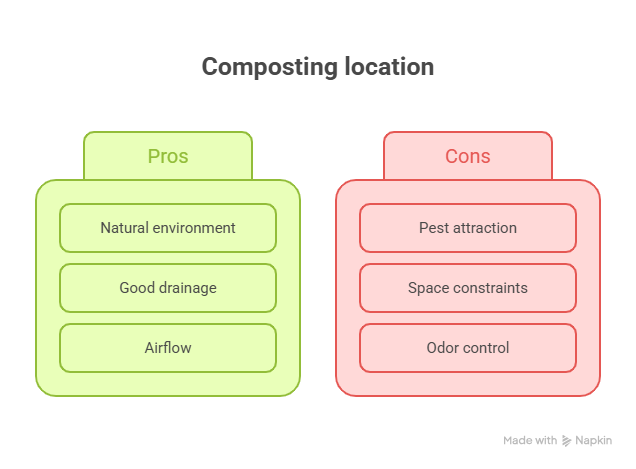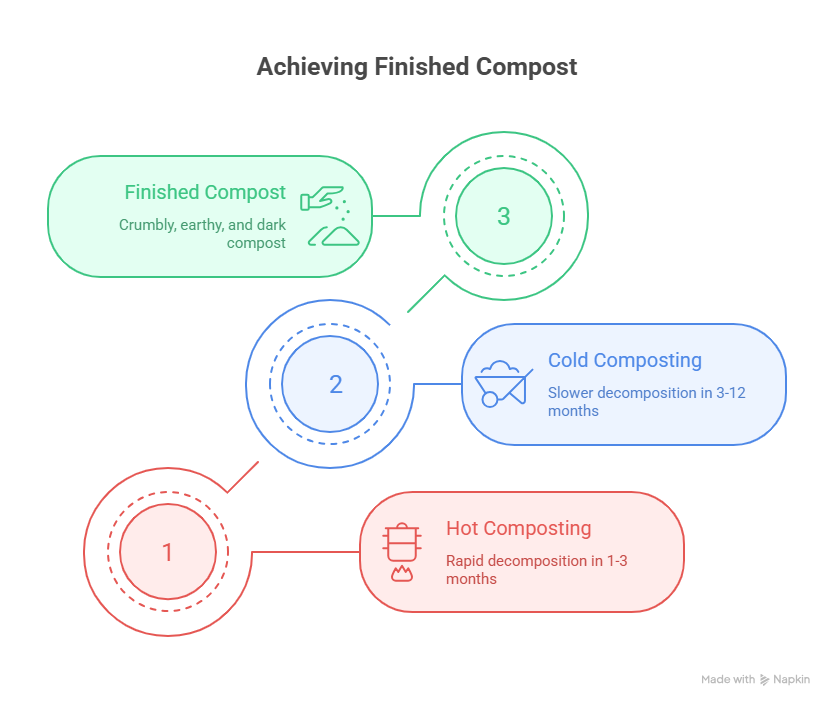Composting is a beneficial procedure in the manner that it transforms food scraps and yard waste into nutrient-rich soil. Preparing kitchen waste compost is imperative for the reason that it helps a lot with reducing landfill waste. In addition, it also helps boost garden health.
According to the revelations of NRAI, around 68 million tonnes of food are wasted every year in India. It’s worth noting that even a single piece of plastic takes 15-20 years at the minimum and 1,000 years maximum to decompose in nature. Sustainable living standards can only be set with the conservation of natural resources. Starting from our homes would help to a huge extent, and that’s where the necessity of generating kitchen waste compost comes.
Composting recycles organic materials into a valuable soil amendment, protects the climate by reducing methane emissions from landfills, and reduces waste. In addition, composting helps recover nutrients in organic materials and provides an opportunity to keep them local.
In this article, we will guide you on how to make kitchen waste compost.
Also Read: How to start Organic Farming
Materials You’ll Need
When you’re questioning how to make food waste compost, first of all, it’s necessary to take note of the materials you would need to go ahead with the procedure.
For kitchen waste compost, what’s necessary are the kitchen scraps, including but not limited to fruit & veggie peels, coffee grounds, tea leaves, and eggshells.
In addition, carbon-rich “browns”, including dried leaves, shredded paper/cardboard, straw, and sawdust, are perfect.
Also, to go ahead with the procedure of preparing kitchen waste compost, you’ll need a compost bin or a dedicated pile, no matter where you prepare it outdoors or indoors.
In addition, be equipped with water and a mixing tool like a pitchfork or garden fork.
How To Make Kitchen Waste Compost? – Step-By-Step Instructions
1. Choose a Location or Bin
When setting up the right spot, note that outdoors can provide with level, partly shaded spot. You can get the advantage with good drainage and airflow.
When you are preparing kitchen waste compost indoors, like in a balcony/flat, it’s advisable to use a bucket or bin with holes and a cover to prevent pests.

2. Prepare the Container
Drill holes properly so that you can expect perfect air and drainage. Now, go ahead with the addition of a base layer (a few inches) of twigs or pebbles so that there’s better airflow.

3. Layering Materials
This method is often referred to as the “Lasagna Method”. For this step, begin with browns for drainage.
Now just add 2 to 3 inches of greens, but alternate with 6 inches of browns. Also, note the point here that 2″ greens work well.
4. Chop if and when needed
Now you need to just cut larger scraps into 1–2″ pieces, as this step speeds up decomposition.
5. Maintenance of Moisture
When you’re following the steps about how to make food waste compost, keep in mind that it’s necessary to keep it damp.
In this regard, you will need to add water during dry weather.In the case you find it too wet or stinky, add more browns.
6. Aerate Regularly
To prepare kitchen waste compost, it’s highly recommended to turn the pile every 1 to 3 weeks. In the process, you need to use a fork.
7. Troubleshoot the issues
There might be noticeable problems when you’re preparing the compost. In case you find smell, add the browns and mix thoroughly.
If it’s too dry, you will have to add greens or water. Adding more browns and greens is recommended. Also, keep turning to reoxygenate.
8. Hold patience and harvest
Hot composting in the form of large piles completes in 1–3 months, while cold composting completes in 3–12 months.
Finished compost will look crumbly, earthy, and dark. Note that it doesn’t resemble the original matter. But it will take some time to come to this position. In that case, patience will serve as the key.
Now that we have discussed how to make food waste compost in the form of steps, let’s discuss some other essential aspects to consider.

What to Compost and What to Avoid
What to compost:
- When preparing kitchen waste compost, you’ll need greens in the form of coffee grounds, eggshells, fruit/veggie peels, and tea leaves.
- Also, you can add browns in the form of dried leaves, cardboard, shredded paper, or sawdust.
What Not to Compost
- You cannot compost certain ingredients like meat, dairy, pet waste, glossy paper, oily food, bones, treated wood, or diseased plants.
How To Make Kitchen Waste Compost? – Optional Methods & Enhancements
- Vermicomposting is one of the approaches where you can add red wiggler worms indoors. This approach is recommended when you want the compost formation to be faster and odourless, ready in approximately 2–3 months. Besides being rich in other nutrients, vermicompost is rich in NPK and is thus great for plant growth. Also, it suppresses disease in plants, increases porosity, in addition to enhancing microbial activity in soil. Also, with this approach, you can expect better water retention and aeration. But this method of preparing kitchen waste compost is relatively high-maintenance and requires a comfort level in handling earthworms.
- Now, when learning about how to make kitchen waste compost, note that Bokashi is an approach that uses fermentation to handle meat/dairy, and in this method, there’s a need for a special bucket/bran. Bokashi composting is highly recommended in the manner that it is fast, clean, flexible, and soil-friendly, and is thus perfect for kitchens, apartments, or small gardens.
- Anaerobic composting allows decomposition of organic matter in the absence of air. The process seals the waste material. When preparing the compost, you need to keep it undisturbed for several weeks. The method is low-maintenance, and when executed well, it allows you to avoid pests. The disadvantage is that in the absence of air, the process is longer.
Aerobic composting allows better and quicker decomposition of organic matter in the presence of air. This approach keeps the processing time shorter, destroys many micro-human or plant pathogens. This approach is dependent on more user intervention, but in general, it is more efficient and useful than anaerobic composting.
Quick Tips to note
When you are looking forward to understanding how to make kitchen waste compost, you’ll need to stick to certain tips as well.
- Chop scraps small so that you can expect faster breakdown. Considering this tip is essential in breaking through protective layers, aiding worms/bacteria, enhancing heat retention, and producing a finer compost, and will help balance effort, moisture, and aeration.
- Always cover fresh greens with browns. Maintain the right balance between brown and green materials so that you can stick to a healthy composting process. In this circumstance, you notice that the compost seems too wet and smelly, so add more brown materials. Like we have already mentioned in the troubleshooting stage that if you find it is too dry and not decomposing, add more green materials.
- One of the essential considerations when learning about how to make kitchen waste compost is that you need to keep the bin ventilated, shaded, and moist. Such an atmosphere will help create ideal conditions where aerobic microbes flourish. That being said, maintaining the perfect atmosphere will help with speeding up composting, reducing smells, while also producing high-quality soil amendment.
- Make sure to use kitchen scraps daily and turn the pile regularly. Regular turning is highly recommended as it keeps the pile oxygenated, efficient, and fresh. So, keep turning for preventing smells, pests, and slow breakdown. Following the approach will help with getting the rich, finished compost.
- Utilise compost activators so that you can speed up the decomposition process by adding compost activators. Also, this approach is highly beneficial if you wish to introduce beneficial microorganisms into the mix.
- Temperature considerations are essential as well. Note that Composting is more active in warmer temperatures. In the case you’re residing in a colder climate, consider insulating your kitchen waste compost pile with straw or cardboard to retain heat.
According to the latest waste management report that is submitted to Chief Minister Rekha Gupta, Municipal Corporation of Delhi, there are plans to add around a hundred more areas to the list of zero waste colonies by May 2026. So the aim is to process an additional twenty-five tonnes of waste every day. There will also be another hundred colonies that will be included in the list by the end of May 2027.
Also Read: Benefits of Organic Farming
Kitchen Waste Composting and Sustainability
Incorporation of kitchen waste compost in the gardening practices is great for sustainability and also regenerative agricultural principles. It turns out to be quite impactful for the creation of a harmonious relationship between the environment and the household. The nutrient-rich compost ensures serving in the form of a formula that has the essential nutrients for improved soil structure, microbial activity and water retention.
Making the fertiliser from the kitchen waste will ensure the development of healthier and more productive plants that can reduce the chances of pests and diseases. The compost that is enriched with nutrients like phosphorous, potassium, and nitrogen is great for plant growth as well as fruit production. The compost also helps with the balancing of the pH levels and the creation of an environment that will be optimal for nutrient absorption. Beyond the physical benefits, the kitchen waste compost also ensures a sustainable lifestyle and connection to nature.
Conclusion
Now that we have already discussed how to make kitchen waste compost, note the point that composting your kitchen waste serves as a simple way to turn waste into black gold. You can use the fertile compost that nourishes soil and plants. Regardless of the choice, hot-pile, worm bin, or bucket composting, you will have to be specific regarding the key ingredients for the maintenance of balance, moisture, and airflow. No matter how fast you want to get the result, start small and evolve your system – only with that can you be assured that gradually recycling household scraps will transform into fertile soil.
